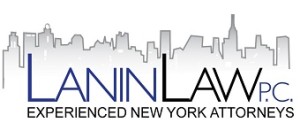FRAUD
Under New York law, the five elements of a fraud claim must be shown by clear and convincing evidence: (1) a material misrepresentation or omission of fact (2) made by defendant with knowledge of its falsity (3) and intent to defraud; (4) reasonable reliance on the part of the plaintiff; and (5) resulting damage to the plaintiff. Schlaifer Nance & Co. v. Estate of Warhol, 119 F.3d 91, 98 (2d Cir.1997); Centro Empresarial Cempresa S.A. v. América Móvil, S.A.B. de C.V., 17 N.Y.3d 269, 276 (2011). Fraud may also be based on a “material omission of fact.” Mandarin Trading Ltd. v. Wildenstein, 16 N.Y.3d 173, 178 (2011).The question for summary judgment is whether the evidence on the record could support a reasonable jury finding that the plaintiff has shown each element by clear and convincing evidence. Abu Dhabi Commercial Bank v. Morgan Stanley & Co. Inc., 888 F.Supp.2d 478, 484 (2012).
Some more information –
Rule 9(b) of the FRCP and CPLR §3016(b) require that a claim for fraud be pleaded with particularity in the Federal and State courts respectively. Claims of fraud are subject to a heightened pleading requirement. Aetna Cas. and Surety Co v. Aniero Concrete Co., 404 F.3d 566, 579 (2d Cir. 2005). This requires a party to state with particularity the circumstances constituting the fraud, including (1) specifying statements that the plaintiff contends were fraudulent, (2) identifying the speaker, (3) stating where and when the statements were made, and (4) explaining why the statements were fraudulent, Shields v. Citytrust Bancorp, Inc., 25 F.3d 1124, 1127-28 (2d Cir. 1994). “A complaint alleging fraud, moreover, must plead facts that give rise to a strong inference of scienter. Deutsche Zentral-Genossenchaftsbank AG v. HSBC North America, 2013 WL 6667601, *5 (S.D.N.Y 2013). The complaint should “inform each defendant of the nature of his alleged participation in the fraud.” Li Jun An v. Hui Zhang, 2013 WL 6503513, at *4 (S.D.N.Y. 2013).
Statute of limitations/time-bar: CPLR § 213(8) (six years from the time of the fraud; or within two years of the time the fraud was, or with reasonable diligence could have been, discovered, whichever is shorter); Yatter v. William Morris Agency, Inc., 268 A.D.2d 335. 335 (1st Dept. 2000).
Fraud does not arise “when the only fraud charged relates to a breach of contract.” Krantz v. Chateau Stores of Canada, Ltd., 256 A.D.2d 186, 187 (1st Dept. 1998); Clifton v. Vista Computer Servs., LLC, No. 01-CV-10206, 2002 WL 1585550, at *2 (S.D.N.Y. July 16, 2002). “[A] simple breach of contract is not to be considered a tort unless a legal duty independent of the contract itself has been violated.” Clark-Fitzpatrick, Inc. v. LIRR, 70 N.Y.2d 382, 389 (1987). The plaintiff must allege a “breach of duty which is collateral or extraneous to the contract.” Weitz v. Smith, 231 A.D.2d 518, 519 (2d Dept. 1996).
Fraud in the inducement and misrepresentation are similar causes of action to common law fraud. They require the plaintiff to show that the defendant made a misrepresentation or material omission of fact; that misrepresentation or omission induced the plaintiff to enter into a contract or purchase something from the defendant; the defendant knew the misrepresentation to be false and intended to induce the plaintiff’s reliance (“scienter”); the plaintiff justifiably relied on the misrepresentation or omission; and resulting injury to the plaintiff. “[A] party that releases a fraud claim may later challenge that release as fraudulently induced if it alleges a fraud separate from any contemplated by the release.” Pappas v. Tzolis, 20 N.Y.3d 228, 233 (2012).
Rescission: “A contract induced by fraud, however, is subject to rescission, rendering it unenforceable by the culpable party.” Merrill Lynch, Pierce, Fenner & Smith, Inc. v. Wise Metals Group, LLC, 19 A.D.3d 273, 275 (1st Dept. 2005).
Merger Clause in Contract: “Although a general merger clause will not preclude parol evidence regarding fraud in the inducement or fraud in the execution . . . , where the parties expressly disclaim reliance on the particular misrepresentations, contrary parole evidence is barred.” Rosenblum v. Glogoff, 96 A.D.3d 514, 514-15 (1st Dept. 2012).
Negligent misrepresentation requires the plaintiff to demonstrate the existence of a special or privity-like relationship imposing a duty on the defendant to impart correct information to the plaintiff; that the information was incorrect; and reasonable reliance on the information.” Mandarin Trading Ltd. v. Wildenstein, 16 N.Y.3d 173, 180 (2011). The statute of Limitations is found in CPLR § 213(1) (six years); Enzinna v. D’Youville College, 84 A.D.3d 1744, 1744-45 (4th Dep’t 2011) “A cause of action based on negligent misrepresentation accrues on the date of the alleged misrepresentation which is relied upon by the plaintiff.” Fandy Corp. v. Lung-Fong Chen, 262 A.D.2d 352, 353 (2d Dept. 1999).
“Casual Statements” in Commercial Context: “Since a vast majority of commercial transactions are comprised of such ‘casual’ statements and contacts, we have recognized that not all representations made by a seller of goods or provider of services will give rise to a duty to speak with care. . . . Rather, liability for negligent misrepresentation has been imposed only on those persons who possess unique or specialized expertise, or who are in a special position of confidence and trust with the injured party such that reliance on the negligent misrepresentation is justified.” Kimmell v. Schaefer, 89 N.Y.2d 257, 263 (1996).
